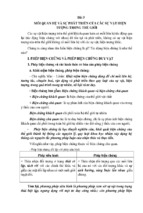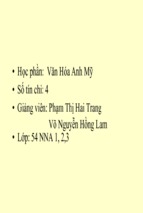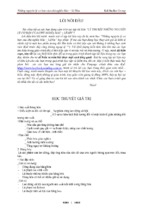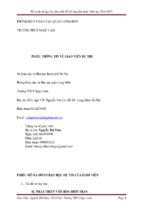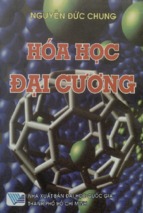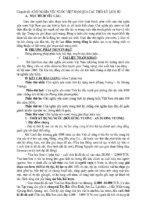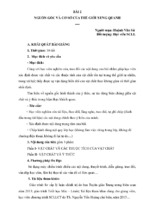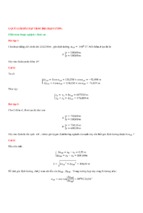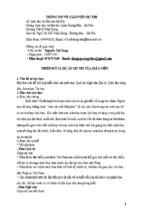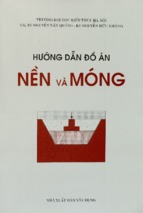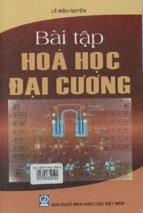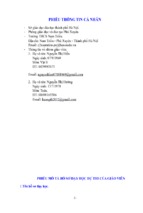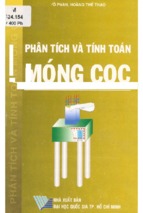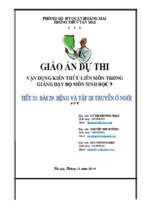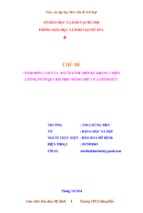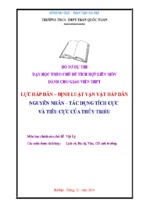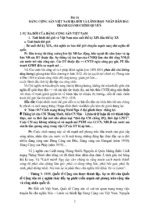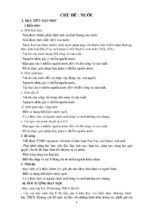Downloaded from ascelibrary.org by RMIT UNIVERSITY LIBRARY on 01/03/19. Copyright ASCE. For personal use only; all rights reserved.
GSP 297
IFCEE
2018
Developments in Earth Retention,
Support Systems, and Tunneling
Papers from Sessions of the International Foundation
Congress and Equipment Expo 2018
Orlando, Florida • March 5–10, 2018
Edited by
Anne Lemnitzer, Ph.D.
Armin W. Stuedlein, Ph.D., P.E.
Muhannad T. Suleiman, Ph.D.
Downloaded from ascelibrary.org by RMIT UNIVERSITY LIBRARY on 01/03/19. Copyright ASCE. For personal use only; all rights reserved.
GEOTECHNICAL
SPECIAL
PUBLICATION
NO.
297
IFCEE 2018
DEVELOPMENTS IN EARTH RETENTION, SUPPORT
SYSTEMS, AND TUNNELING
SELECTED PAPERS FROM SESSIONS OF THE INTERNATIONAL
FOUNDATION CONGRESS AND EQUIPMENT EXPO 2018
March 5–10, 2018
Orlando, Florida
SPONSORED BY
International Association of Foundation Drilling
Deep Foundations Institute
Pile Driving Contractors Association
The Geo-Institute of the
American Society of Civil Engineers
EDITED BY
Anne Lemnitzer, Ph.D.
Armin W. Stuedlein, Ph.D., P.E.
Muhannad T. Suleiman, Ph.D.
Published by the American Society of Civil Engineers
Downloaded from ascelibrary.org by RMIT UNIVERSITY LIBRARY on 01/03/19. Copyright ASCE. For personal use only; all rights reserved.
Published by American Society of Civil Engineers
1801 Alexander Bell Drive
Reston, Virginia, 20191-4382
www.asce.org/publications | ascelibrary.org
Any statements expressed in these materials are those of the individual authors and do not
necessarily represent the views of ASCE, which takes no responsibility for any statement
made herein. No reference made in this publication to any specific method, product, process,
or service constitutes or implies an endorsement, recommendation, or warranty thereof by
ASCE. The materials are for general information only and do not represent a standard of
ASCE, nor are they intended as a reference in purchase specifications, contracts, regulations,
statutes, or any other legal document. ASCE makes no representation or warranty of any
kind, whether express or implied, concerning the accuracy, completeness, suitability, or
utility of any information, apparatus, product, or process discussed in this publication, and
assumes no liability therefor. The information contained in these materials should not be used
without first securing competent advice with respect to its suitability for any general or
specific application. Anyone utilizing such information assumes all liability arising from such
use, including but not limited to infringement of any patent or patents.
ASCE and American Society of Civil Engineers—Registered in U.S. Patent and Trademark
Office.
Photocopies and permissions. Permission to photocopy or reproduce material from ASCE
publications can be requested by sending an e-mail to
[email protected] or by locating a
title in ASCE's Civil Engineering Database (http://cedb.asce.org) or ASCE Library
(http://ascelibrary.org) and using the “Permissions” link.
Errata: Errata, if any, can be found at https://doi.org/10.1061/9780784481608
Copyright © 2018 by the American Society of Civil Engineers.
All Rights Reserved.
ISBN 978-0-7844-8160-8 (PDF)
Manufactured in the United States of America.
IFCEE 2018 GSP 297
iii
Preface
Downloaded from ascelibrary.org by RMIT UNIVERSITY LIBRARY on 01/03/19. Copyright ASCE. For personal use only; all rights reserved.
This is the fourth volume of six Geotechnical Special Publications (GSPs) and one
Geotechnical Practice Publication (GPP) containing papers from the 2018
International Foundations Congress and Equipment Expo (IFCEE18) held in Orlando,
Florida on March 5–10, 2018. The IFCEE conference series combines a technical
conference and equipment show dedicated to the design and construction of
foundation systems, using the latest geo-engineering and geo-construction
technologies and practices. The IFCEE conference series is a one of a kind event that
attracts attendees from around the world for the world’s largest equipment exposition
dedicated solely to the deep foundations industry. This Congress combined the 2018
annual meetings of ASCE’s Geo-Institute, the International Association of
Foundation Drilling (ADSC), the Pile Driving Contractors Association (PDCA) and
the Deep Foundations Institute (DFI). This event was the third Congress in the IFCEE
conference series, following the successful 2009 and 2015 meetings, in which these
leading geotechnical and geotechnical-related organizations joined together for a
single and singular annual congress. IFCEE18 provided an international forum to
discuss technological advances, case histories, and present challenges related to
geotechnical and foundation engineering. The Congress was attended by a wide range
of geo-professionals including engineers, contractors, academicians, equipment
manufacturers, geo-technologists, researchers, and service, material and tooling
suppliers.
This publication culminates two years of effort by the technical planning committee
whose focus has been to continue the success of the previous meetings in the IFCEE
conference series. Many individuals are responsible for the content of this volume, all
of whom served in the efforts to maintain the standard set by previous proceedings.
An international call for papers and a rigorous peer review process yielded 280
accepted technical papers, that were presented in 47 sessions, in addition to invited
keynote presentations. Papers were reviewed in accordance with ASCE GSP
standards. Accordingly, each paper was subjected to technical review by two or more
independent peer reviewers. Publication requires concurrence by at least two peer
reviewers.
The Editors would like to express their appreciation for having been provided the
opportunity to be a part of this Congress’ organization, their sincere thanks to the
numerous session chairs and reviewers, and we hope that these proceedings will be of
use to the geotechnical engineering community for many years to come.
The Editors,
Anne Lemnitzer, Ph.D., A.M.ASCE, M.DFI, University of California, Irvine
Armin W. Stuedlein, Ph.D., P.E., M.ASCE, M.DFI, Oregon State University
Muhannad T. Suleiman, Ph.D., A.M.ASCE, M.DFI, Lehigh University
© ASCE
IFCEE 2018 GSP 297
iv
Acknowledgments
Downloaded from ascelibrary.org by RMIT UNIVERSITY LIBRARY on 01/03/19. Copyright ASCE. For personal use only; all rights reserved.
Thanks are due to the authors, primary reviewers, session chairs, and program
committee, without whom this publication would not be possible.
IFCEE 2018 Conference Program Committee
Conference Chair
W. Robert Thompson, III, P.E., D.GE, M.ASCE, Dan Brown and Associates, PC
Technical Program Committee
Tracy T. Brettmann, P.E., D.GE, M.ASCE, A. H. Beck Foundation Company, Inc.
Allen Cadden, P.E., D.GE, F.ASCE, Schnabel Engineering
Peggy Hagerty-Duffy, P.E., D.GE, Hagerty Engineering, Inc.
Bernard H. Hertlein, FACI, M.ASCE, GEI Consulting, Inc.
Terence P. Holman, Ph.D., P.E., M.ASCE, Turner Construction Company
Michael D. Justason, P.Eng., M.ASCE, McMaster University/Bermingham
Foundation Solutions
Mary Ellen Large, P.E., D.GE, M.ASCE, Deep Foundations Institute
Anna Sellountou, Ph.D., A.M.ASCE, Pile Dynamics, Inc.
Proceedings Editors
Muhannad T. Suleiman, Ph.D., A.M.ASCE, Lehigh University
Anne Lemnitzer, Ph.D., P.E., A.M.ASCE, University of California, Irvine
Armin W. Stuedlein, Ph.D., P.E., M.ASCE, Oregon State University
IFCEE 2018 Sessions and Session Chairs
Deep Foundations
Deep Foundations & Seismic Issues
William M. Camp, III, P.E., D.GE, M.ASCE, S&ME, Inc.
Design and Analysis of Deep Foundations
Sanjeev Malhotra, P.E., G.E., D.GE, Consulting Engineer; Elizabeth M. Smith, P.E.,
G.E., D.GE, Terracon Consultants, Inc.; James W. Niehoff, P.E., M.ASCE, GEI
Consultants, Inc.
Field Testing: Axial/Lateral I
Gerald Verbeek, M.ASCE, Verbeek Management Services; John P. Turner, Ph.D.,
P.E., D.GE, M.ASCE, Dan Brown and Associates, PC; Murad Y. Abu-Farsakh,
Ph.D., P.E., M.ASCE, Louisiana State University
© ASCE
IFCEE 2018 GSP 297
Pile Driving: Design and Construction
Michael H. Wysockey, Ph.D., P.E., M.ASCE, Thatcher Engineering Corporation
Downloaded from ascelibrary.org by RMIT UNIVERSITY LIBRARY on 01/03/19. Copyright ASCE. For personal use only; all rights reserved.
Practical Aspects of Foundation Installation and Investigation
Sanjeev Malhotra, P.E., G.E., D.GE, Consulting Engineer
Earth Retention and Support
Excavation Support: Design and Construction
Helen Robinson, P.E., GEI Consultants, Inc.
Mechanically Stabilized Earth and Geosynthetic-Reinforced Soil Systems
Ben A. Leshchinsky, Ph.D., A.M.ASCE, Oregon State University
Seismic Aspects of Earth Retention
Ali A. Eliadorani, Ph.D., P.E., P.L.S., M.ASCE, South Carolina State University
Tunnels and Buried Structures
Eric Wang, P.E., LEED AP, M.ASCE, HNTB Corporation; Thomas W. Pennington,
P.E., M.ASCE, Jacobs Associates
Ground Improvement & Seepage Control
Bio-Based Soil Improvement
Dimitrios Zekkos, Ph.D., P.E., M.ASCE, University of Michigan & geoengineer.org;
Jason DeJong, Ph.D., University of California, Davis; Kenichi Soga, Ph.D., FREng,
FICE, M.ASCE, University of California, Berkeley
Geosynthetic/Fiber Reinforcement
Ben A. Leshchinsky, Ph.D., A.M.ASCE, Oregon State University
Ground Improvement: Treatment Case Studies
Christian B. Woods, P.E., D.GE, G.E., M.ASCE, Densification, Inc.
Liquefaction and Densification
Menzer Pehlivan, Ph.D., P.E., M.ASCE, CH2M HILL
Retaining and Cutoff Wall Design and Construction
Kenneth L. Fishman, Ph.D., P.E., M.ASCE, McMahon & Mann Consulting
Engineers, P.C.; Nasser Massoudi, Ph.D., P.E., M.ASCE, Bechtel Corp.
Stone Columns/Piers/Grouting I
Kord J. Wissmann, Ph.D., P.E., D.GE, M.ASCE, Geopier Foundation Company; Jie
Han, Ph.D., P.E., F.ASCE, The University of Kansas
© ASCE
v
IFCEE 2018 GSP 297
Downloaded from ascelibrary.org by RMIT UNIVERSITY LIBRARY on 01/03/19. Copyright ASCE. For personal use only; all rights reserved.
Other Topics: Deep Foundations and Site Characterization
Advances in Energy Piles
Omid Ghasemi Fare, Ph.D., A.M.ASCE, University of Louisville; John S.
McCartney, Ph.D., P.E., M.ASCE, University of California, San Diego
Bridges: Foundation Design and Construction
Sam Sternberg, III, P.E., M.ASCE, Thompson Engineering
Characterizing the Behavior of Soils
Cumaraswamy (Vipu) Vipulanandan, Ph.D., P.E., M.ASCE, University of Houston;
Yazen Khasawneh, Ph.D., P.E., M.ASCE, NTH Consultants, Ltd.
Liquefaction: Analysis and Design
C. Yoga Chandran, Ph.D., G.E., P.E., M.ASCE, CH2M HILL
QA/QC for Deep Foundations
Anna Sellountou, Ph.D., A.M.ASCE, Pile Dynamics, Inc.
Rock Mechanics
Ingrid Tomac, Ph.D., A.M.ASCE, University of California, San Diego; Ehsan
Ghazanfari, Ph.D., P.E., M.ASCE, University of Vermont
Site Characterization
Xiong (Bill) Yu, Ph.D., P.E., F.ASCE, Case Western University
Other Topics in Geotechnical Engineering
Constitutive Modeling
Usama S. El Shamy, Ph.D., P.E., M.ASCE, Southern Methodist University; Seung
Jae Lee, Ph.D., Aff.M.ASCE, Florida International University
Pavements and Subgrades
Boo Hyun Nam, Ph.D., A.M.ASCE, University of Central Florida
Shallow Foundations
Xiong Zhang, Ph.D., P.E., A.M.ASCE, Missouri University of Science and
Technology
Slopes, Dams, Embankments
Timothy D. Stark, Ph.D., P.E., D.GE, F.ASCE, University of Illinois at UrbanaChampaign; Binod Tiwari, Ph.E., P.E., M.ASCE, California State University,
Fullerton; Beena Ajmera, Ph.D., A.M.ASCE, California State University, Fullerton
© ASCE
vi
IFCEE 2018 GSP 297
vii
Unsaturated Soils
Farshid Vahedifard, Ph.D., P.E., M.ASCE, Mississippi State University; Rifat Bulut,
Ph.D., M.ASCE, Oklahoma State University
Downloaded from ascelibrary.org by RMIT UNIVERSITY LIBRARY on 01/03/19. Copyright ASCE. For personal use only; all rights reserved.
Selected Other Topics in Geotechnical Engineering
Matteo Montesi, P.E., M.ASCE, WSP USA; Curt R. Basnett, P.E., M.ASCE. CH2M
HILL; Morgan Race, Ph.D., P.E., M.ASCE, Braun Intertec; Kam Weng Ng, Ph.D.,
P.E., M.ASCE, University of Wyoming; Lori A. Simpson, G.E., P.E., M.ASCE,
Langan Treadwell Rollo
Case Histories, Lessons Learned and General Practice
ACIP Piles: Case Histories and Lessons Learned
W. Morgan NeSmith, P.E., M.ASCE, Berkel & Company Contractors, Inc.
Drilled Shafts: Case Histories and Lessons Learned
William F. (Bubba) Knight, P.E., M.ASCE, Loadtest, A Division of Fugro USA
Land, Inc.
Driven Piles: Case Histories and Lessons Learned
Michael H. Wysockey, Ph.D., P.E., M.ASCE, Thatcher Engineering Corporation
Excavation Support: Case Histories and Lessons Learned
Richard J. Valentine, P.E., M.ASCE, Valentine Engineering Consultants
Ground Improvement: Case Histories and Lessons Learned
Jose L. M. Clemente, Ph.D., P.E., D.GE, F.ASCE, Bechtel NS&E
Micropiles: Case Histories and Lessons Learned
Steve Davidow, P.E., S.E., P.Eng., Aff.M.ASCE, Quanta Subsurface
Site Investigation: Case Histories and Lessons Learned
Conrad W. Felice, Ph.D., P.E., D.GE, F.ASCE, C. W. Felice, LLC
Slope Stabilization/Earth Retention: Case Histories and Lessons Learned
Timothy D. Stark, Ph.D., P.E., D.GE, F.ASCE, University of Illinois at UrbanaChampaign
IFCEE 2018 Primary Paper Reviewers
John Abdalkhani
Amir Ahmadipur
Sherif Abdelaziz
Aseel Ahmed
Yasser Abdelhamid
Beena Ajmera
Kofi Acheampong
Gauen Alexander
Muthu Adigovindan
Ryan Allin
© ASCE
Robert Alperstein
Art Alzamora
Denis Ambio
Omar Amer
Joram Amir
IFCEE 2018 GSP 297
Downloaded from ascelibrary.org by RMIT UNIVERSITY LIBRARY on 01/03/19. Copyright ASCE. For personal use only; all rights reserved.
Jinwoo An
Donald Anderson
Ed Anderson
Ronald Andrus
Luis Arboleda
Allam Ardah
David Arellano
George Aristorenas
Haydar Arslan
Arul Arumoli
Moi Arzamendi
Reza Ashtiani
Andrew Assadollahi
Paul Axtell
Alireza Ayoubian
Alireza Saeedi
Azizkandi
Ahmed Baghdady
Paola Bandini
Aritra Banerjee
Curt Basnett
Prasenjit Basu
Bate Bate
Andrew Baxter
Ira Beer
Jomaa Ben-Hassine
Jonathan Bennett
Keith Bennett
Jorge Bheim
Dale C. Biggers
Jerold Bishop
Tanner Blackburn
Antonio Bobet
Glen Bobnick
Giovanni Bonita
Michael Boone
David Borger
Stan Boyle
Tom Brandon
Kyle Brennan
Tracy Brettmann
Jean-Louis Briaud
Frederick (Rick) A.
Brinker
© ASCE
viii
E. Buka
Paul Bullock
Rifat Bulut
Kristi Bumpas
Giuseppe Buscarnera
Allen Cadden
Billy Camp
Franz Campero
Greg Canivan
Junnan Cao
Salvatore Caronna
John Case
Ray Castelli
Jan Cermak
Bora Cetin
Yoga Chandran
Geoff Chao
Lizhou Chen
W. Z. Chen
Les Chernauskas
Bhaskar Chittoori
Byoung Hooi Cho
Sanghyun Chun
Jose Clemente
Russell Cooper
Michael Coryell
Dave Crouthamel
Bobby Daita
Steven Dapp
Domenic D'Argenzio
Steve Davidow
John Deeken
Jason DeJong
Karishma Desai
Jerry DiMaggio
Randall Divito
Yi Dong
Elliott Drumright
Elizabeth Dwyre
Paul Eggers
Paul Eickenberg
Usama Samir El
Shamy
Ghada Ellithy
Fathey Elsaid
Mostafa Elseifi
Carlos Englert
Alan Esser
Jeff Evans
Matt Evans
Ragui Wilson Fahmy
Arvin Farid
Ray Fassett
Peter Faust
Sixto Fernandez
Alexander Filotti
Geroge Filz
Jared Fischer
Kenneth Fishman
Michael Flynn
Emmanuel Fosteris
Ray Franz
Murray Fredlund
David Frost
Mo Gabr
Mahi Galagoda
Phillip Gallet
Quan Gao
John Garber
Cyrus Garner
Donald Gerken
Hande Gerkus
Omid Ghasemi-Fare
Akrouch Ghassen
Mohammad Ghavami
Ehsan Ghazanfari
James Gingery
Matt Glisson
Matt Goff
Aaron Goldberg
Larry Goldfarb
Jesus Gomez
Michael G. Gomez
Clay Goodman
David Graham
Donald Gray
Donald Green
Jared Green
IFCEE 2018 GSP 297
Downloaded from ascelibrary.org by RMIT UNIVERSITY LIBRARY on 01/03/19. Copyright ASCE. For personal use only; all rights reserved.
Jean Habimana
Seth Hamblin
Chanjuan Han
Jie Han
Jim Hansen
Nafiul Haque
Nicholas Harman
Dean Harris
Megan Hart
Ahmadreza Hedayat
James Hite
Chu Ho
I-Hsuan Ho
Jon Ho
Oliver Hoops
David Horhota
Zahid Hossain
Xiewen Hu
Jie Huang
Aaron Hudson
Nick Hudyma
Jonathan Huff
Troy Hull
Dana Humphrey
Mohamad Hussein
James Hussin
Nejan Huvaj
Elvis Ishimwe
Magued Iskander
Tyler Jahn
Matthew Janes
John Jenkins
Yan Jiang
Lawrence F. Johnsen
Kenneth Johnson
John Juenger
Hyuk-Sang Jung
Onur Kacar
Arash Kamali-Asl
Peter Kandaris
Xin Kang
Ismail Karatas
Edward Kavazanjian
Qamar Kazmi
© ASCE
ix
Andrew Keene
Ryan Keiper
Yazen Khasawneh
Ali Khosravi
Yoshiaki Kikuchi
Meeok Kim
Sihyun Kim
Sonny Kim
Yonje Kim
Scott Kirts
Junyoung Ko
Prabir Kolay
Josh Koltz
Susheel Kolwalker
Van Komurka
Dimitrious
Konstantakos
Tim Kovacs
Sachin Kumar
Debra Laefer
Mary Ellen Large
John Lawrence
Imsoo Lee
Seung Jae Lee
Anne Lemnitzer
Ben Leshchinsky
Christopher Lewis
Michael Lewis
Paul Lewis
Chang Li
Jiliang Li
Lin Li
Marina Li
Min Liew
Garland Likins
Keng-Wit Lim
Chuang Lin
Xiaobin Lin
Bret Lingwall
Jenny Liu
Shimin Liu
Sebastian LoboGuerrero
Libby Loeffler
Erik Loehr
Theresa Loux
John Lupo
Scott Mackiewicz
Ashley Macmillan
Anwar Maharmeh
Ali Maher
Sanjeev Malhotra
Kalehiwot Nega
Manahiloh
Brian Martinez
Ben Mason
John McCartney
Alexander Mcgillivray
JT McGinnis
Michael McVay
Nick Meloy
Brian Metcalfe
Peter Middendorp
Marta Miletic
Kevin Miller
Bert Miner
Filippo Mira-Catto
Deb Mishra
Roxbeh Moghaddam
Soroush Mokhtari
Matteo Montesi
Brina Montoya
Joon-Shik Moon
Taehyun Moon
Mike Muchard
Gray Mullins
Finnegan Mwape
Boo Hyun Nam
Soonkie Nam
Mohammad Nasim
David Neilson
Kam Weng Ng
Trung Dung Nguyen
James Niehoff
Mary Nodine
Iraj Noorany
Nicolas Oettle
Kwabena Ofori-Awuah
IFCEE 2018 GSP 297
Downloaded from ascelibrary.org by RMIT UNIVERSITY LIBRARY on 01/03/19. Copyright ASCE. For personal use only; all rights reserved.
Ed O'Malley
George Onorato
Phillip Ooi
Hasan Ozer
Sam Paikowsky
Anant Panwalkar
Ujwalkumar Patil
James Pegues
Tom Pennington
James Pergues
Dunja Peric
Howard Perko
Juan Pestana
James Phipps
Gregg Piazza
George Piscsalko
Marc Plotkin
Tyler Poggiogalle
Daniel Pradel
Russell Preuss
Tom Printz
Anand Puppala
Sastry Putcha
Tong Qiu
Morgan Race
Parishad Rahbari
Dhooli Raj
Promod Rao
Deepak Rayamajhi
Mohammad Razavi
Alex Reeb
Kurt Rhoads
Frederick Rhyner
Tom Richards
Charles Roarty
Donald Robertson
Brent Robinson
Helen Robinson
Juan Rodriguez
Mark Rohrbach
Kyle Rollins
Dario Rosidi
Jason Ross
John Rowley
© ASCE
x
Daniel Ruffing
Cassandra Rutherford
Tom Sabourin
Nick Salisbury
Marika Santagata
Fernando Sarabia
Sagar Satyal
Steve Saye
Zach Scarboro
David Scarpato
Vern Schaefer
Charles Warren
Schwartz
Brian Sears
Henry Seawell
Jeff Segar
Al Sehn
Gary Seider
Anna Sellountou
Hoyoung Seo
Jeongbok Seo
Sunil Sharma
Anna Shidlovskaya
Phil Shull
Erin Sibley
Tim Siegel
Gregory Silver
Matt Silveston
Johanna Simon
Bob Simpson
Lori Simpson
Jenn Sketchley
Matthew Sleep
Don Smith
Miriam Smith
Ryan Snook
Kenichi Soga
Ahmad Souri
Eric Steward
Melissa Stewart
Charles (Andy) Stone
Bryan Strohman
Armin Stuedlein
Muhannad Suleiman
Steve Sun
Xiaohui Sun
Oscar Suncar
Sonia Swift
Amirata Taghavi
Takefumi Takuma
Majid Talebi
Gilbert Tallard
Burak Tanyu
David Tara
Junliang Tau
Ed Theinat
Robert Thompson
James Tinjum
Binod Tiwari
Ingrid Tomac
Justin Toney
Lucas Turko
Benjamin Turner
John Turner
Richard (Dick) Vaeth
Richard Valentine
Adriaan Van Seters
Ben Vance
Dan VandenBerge
Philip Vardon
Cumaraswamy
Vipulanandan
Michael Walker
Scott Walker
Bill Walton
Dingbao Wang
Eric Wang
Fei Wang
Lei Wang
Shugang Wang
Lei Wei
Darrell Wilder
Daniel Woeste
Jeong Yun Won
Moussa Wone
Timothy Wood
Lee Wooten
Yonggui Xie
IFCEE 2018 GSP 297
Downloaded from ascelibrary.org by RMIT UNIVERSITY LIBRARY on 01/03/19. Copyright ASCE. For personal use only; all rights reserved.
Xiaoming Yang
Jun Yao
Fred Yi
Taesun You
Heejung Youn
Xiong Yu
Zia Zafir
Atefeh Zamani
Natasha Zamani
Claudia Zapata
Justin Zarella
Dimitrios Zekkos
Ming Zhang
Xiong Zhang
Katerina Ziotopoulou
Jorge Zornberg
© ASCE
xi
IFCEE 2018 GSP 297
xii
Contents
Downloaded from ascelibrary.org by RMIT UNIVERSITY LIBRARY on 01/03/19. Copyright ASCE. For personal use only; all rights reserved.
Earth Retention and Support
Finite Element Analyses of an Urban Cofferdam Using Hypoplasticity
Clay Model .................................................................................................................. 1
A. Felipe Uribe-Henao, Luis G. Arboleda-Monsalve, Juan Garcia, and Lisa Star
Temperature and Concrete Time-Dependent Effects on Urban
Cofferdams ................................................................................................................ 12
A. Felipe Uribe-Henao, Luis G. Arboleda-Monsalve, Alejandro Velasquez-Perez,
David G. Zapata-Medina, and Fernando Sarabia
Analysis of Predicted Capacity versus Load Test Results of Ground
Anchors in Multi-Geology Installation ................................................................... 23
Eric S. Backlund and Noel W. Janacek
Innovations in Removable Post Tensioned Strand Ground Anchors .................. 33
Lucian Bogdan and Patrick Wörle
Numerical Modeling of a Tiedback Wood-Lagging Wall during
Excavation ................................................................................................................. 43
Soheil Kamalzare, David E. Weatherby, Matthew J. Niermann,
and Dominic Parmantier
Investigation on the Effects of Different Nail Diameters,
Soil Elastic Moduli and Pullout Rates on the Pullout Shear
Resistance of Soil-Nail Interface.............................................................................. 54
A. Saeedi-Azizkandi, M. H. Baziar, H. Dashtara, and A. H. Kolahdouzan
Empirical Method to Estimate Lateral Wall Deformation
Profiles and Bending Moment in Excavation Retaining Walls ............................ 65
L. Sebastian Bryson, David G. Zapata-Medina, and Jorge Romana-Giraldo
Numerical Investigation of the Performance of a Geosynthetic
Reinforced Soil-Integrated Bridge System (GRS-IBS) under
Working Stress Conditions ...................................................................................... 76
Murad Abu-Farsakh, Allam Ardah, and George Voyiadjis
Lateral Resistance of Abutment Piles Near Mechanically Stabilized
Earth Walls................................................................................................................ 88
Kyle M. Rollins, Andrew Luna, Ryan Budd, Jason Besendorfer, Cody Hatch,
Jarell Han, and Robert Gladstone
© ASCE
IFCEE 2018 GSP 297
xiii
Numerical Investigation on the Performance of Geosynthetic-Reinforced
Soil Piers under Axial Loading ................................................................................ 99
Mahsa Khosrojerdi, Tong Qiu, Ming Xiao, and Jennifer Nicks
Downloaded from ascelibrary.org by RMIT UNIVERSITY LIBRARY on 01/03/19. Copyright ASCE. For personal use only; all rights reserved.
Prediction Model for Estimating the Immediate
Settlement of Foundations Placed on Reinforced Soil......................................... 109
Mahsa Khosrojerdi, Ming Xiao, Tong Qiu, and Jennifer Nicks
Interface Studies on Geogrid and Fly Ash ........................................................... 119
K. P. Bhargav Kumar and B. Umashankar
Cyclically Induced Deformations in Lightweight Cellular Concrete
Backfilled Retaining Structures ............................................................................ 130
Binod Tiwari, Beena Ajmera, and Diego Villegas
Fragility Analysis of Seismic Response of Cantilever Retaining
Walls with Cohesive and Cohesionless Backfill Materials .................................. 139
Siavash Zamiran and Abdolreza Osouli
Seismic-Induced Deformations of a Geosynthetic Reinforced Soil
Bridge Abutment Subjected to Longitudinal Shaking ........................................ 147
Wenyong Rong, Yewei Zheng, John S. McCartney, and Patrick J. Fox
Experimental and Numerical Investigation of Lateral Earth Pressures
Generated from Repeated Loading ....................................................................... 158
Jakob R. Walter, Amr M. Morsy, and Jorge G. Zornberg
Comparison of Measurements and Limit State Solutions for
Soil Pressures on Deep Flexible Underground Structures .................................. 169
Lohrasb Keykhosropour and Anne Lemnitzer
Assessment of Dynamic Load Allowance for Buried Culverts ........................... 179
Mehdi Kadivar, Kalehiwot Nega Manahiloh, Victor N. Kaliakin,
and Harry W. Shenton III
Compensation Grouting Program to Mitigate Settlement of Utilities
from Tunneling ....................................................................................................... 189
James C. Myers, Jonathan Taylor, and Lucian P. Spiteri
Design Methodology to Evaluate Hydraulic Jacking in Pressure Tunnels ....... 201
Mohammad Moridzadeh and Peter Dickson
Ground Improvement and Seepage Control
Soil-Bentonite Slurry Trench Cutoff Wall Longevity ......................................... 214
Daniel Ruffing, Jeffrey Evans, and Nathan Coughenour
Emergency Bridge Pier Foundation Repair with Pressed-in Piles .................... 224
Takefumi Takuma and Takayuki Sakai
© ASCE
IFCEE 2018 GSP 297
xiv
Evaluation of Water Vapor Sorption and Electrical Conductivity
Methods to Determine Bentonite Content of a Soil-Bentonite Barrier ............. 238
Idil Deniz Akin, Jiannan Chen, Craig H. Benson, and William J. Likos
Slopes, Dams, and Embankments
Downloaded from ascelibrary.org by RMIT UNIVERSITY LIBRARY on 01/03/19. Copyright ASCE. For personal use only; all rights reserved.
Geotechnical Stability Analysis of Earthen Levees in the
Face of Uncertainty................................................................................................. 247
Lei Wang, Michael Powers, Michael Studiner, Mohammed Fallatah,
and Wenping Gong
Strain in a GRS Bridge Abutment: Strain Gauge Attachment Techniques,
Performance and Survivability during Construction and Operation ............... 257
Majid Talebi, Christopher L. Meehan, and Tyler M. Poggiogalle
Changes in Temperature Distribution in a Geosynthetic Reinforced Soil
Abutment and Their Effect on Measured Strain ................................................. 267
Tyler M. Poggiogalle, Majid Talebi, and Christopher L. Meehan
Lessons Learned: Oklahoma State Highway 99 over the Washita River.......... 278
Kristi K. Bumpas, Chad E. Grinsteiner, and Jennifer Koscelny
Influence of Slope Density on the Stability and Deformation of Clayey
Slopes ....................................................................................................................... 293
Binod Tiwari, Beena Ajmera, Mohammed Khalid, Samin Donyanavard,
and Rosalie Chavez
Impact of Variation of Small Strain Shear Modulus on Seismic
Slope Stability Analysis of a Levee: A Sensitivity Analysis ................................ 302
Sayantan Chakraborty, Aritra Banerjee, Jasaswee T. Das, Leila Mosadegh,
and Anand J. Puppala
A Landslide Model with the Shear Band Propagation: Modification for
Unsaturated Condition ........................................................................................... 314
Sihyun Kim, Brian J. Fiedler, and Seunghee Kim
Effect of the Core on the Upstream Stability of Dams under Sudden
Drawdown Conditions ............................................................................................ 324
Salama Al-Labban and Manoj Chopra
Experimental Investigation of Effects of Sliding Distance on Impact
Force from Granular Sliding Mass to a Rigid Obstruction ................................ 333
Amir Ahmadipur and Tong Qiu
Design Optimization of I-Wall Levee System Supported by
Sand Foundation ..................................................................................................... 341
Parishad Rahbari and Nadarajah Ravichandran
© ASCE
IFCEE 2018 GSP 297
Downloaded from ascelibrary.org by RMIT UNIVERSITY LIBRARY on 01/03/19. Copyright ASCE. For personal use only; all rights reserved.
Finite Element Analyses of an Urban Cofferdam Using Hypoplasticity
Clay Model
A. Felipe Uribe-Henao, S.M.ASCE1; Luis G. Arboleda-Monsalve, Ph.D., M.ASCE2;
Juan Garcia3; and Lisa Star, Ph.D., P.E., M.ASCE4
1
Research Assistant, Dept. of Civil, Environmental, and Construction Engineering, Univ. of
Central Florida, Orlando, FL 32816. E-mail:
[email protected]
2
Assistant Professor, Dept. of Civil, Environmental, and Construction Engineering, Univ. of
Central Florida, Orlando, FL 32816. E-mail:
[email protected]
3
Undergraduate Research Assistant, Dept. of Civil Engineering and Construction Engineering
Management,
California
State
Univ.,
Long
Beach,
CA
90840.
E-mail:
[email protected]
4
Assistant Professor, Dept. of Civil Engineering and Construction Engineering Management,
California State Univ., Long Beach, CA 90840. E-mail:
[email protected]
Abstract
Urban cofferdams are used to build the rigid central core of high-rise buildings and are
conceived as temporary retaining excavation structures. For the case of the One Museum Park
West (OMPW) building (Chicago, IL), settlement points and inclinometer data were recorded
during the excavation within the cofferdam. This cofferdam stage represented 20% of the total
excavated volume of this project and caused about a third of the total measured settlements. An
axisymmetric numerical model using an advanced constitutive soil model, the hypoplasticity
model for clays with intergranular strains, is developed to simulate an idealized lower bound
solution of the ground movements resulting from the OMPW cofferdam excavation. Significant
differences between computed and observed ground movements are presented when compliance
effects between structural members, installation of nearby foundations, and flexibility of the
cofferdam and internal bracing connections are ignored.
INTRODUCTION
In major populated areas, urban cofferdams are used as temporary excavation structures to build
the rigid central core of high rise buildings. These cofferdams are built using interlocked modular
pieces of sheet piles to form a circular retaining wall, which is laterally braced with internal ring
beams. Soil removal and installation of the bracing system are carried out to cast the foundations
of a rigid central core of the building. Ring beams made of hot-rolled wide-flanged structural
steel sections are assembled segmentally using bolted end-plate connections. Urban cofferdams
constitute an “ancillary” pre-excavation activity of a major construction sequence, mistakenly
© ASCE
1
Downloaded from ascelibrary.org by RMIT UNIVERSITY LIBRARY on 01/03/19. Copyright ASCE. For personal use only; all rights reserved.
IFCEE 2018 GSP 297
conceived to have minor contributions to the total excavation-induced ground movements. Thus,
instrumentation to identify causes of ground deformation is not always available for these preexcavation activities. Finno et al. (2014) presented the ground movements of a combined
excavation sequence (i.e., bottom-up and top-down methods used in the same project) conducted
for the construction of five levels of basements and rigid central core of the OMPW building.
The bottom-up excavation sequence, which is the primary focus of this paper, was performed
using a circular cofferdam braced with steel ring beams. It was observed that approximately 30%
of the total settlements were developed during this excavation activity, including the construction
of the central core. Compliances in the connections of sheet piles and ring beams contributed to
the resulting ground deformations. An axisymmetric numerical model using an advanced
constitutive soil model, the hypoplasticity model for clays with intergranular strains, is
developed in this paper to simulate the ground movements resulting from the OMPW cofferdam
construction. It is not possible to reconcile full-scale field performance of geotechnical structures
with analytical and numerical predictions if all the causes of movements are not identified and
properly modeled in the numerical environment. This paper addresses this issue by comparing
the observed performance of an urban cofferdam with a lower bound numerical solution using an
advanced soil constitutive model and soil-structure interaction.
URBAN COFFERDAM AT ONE MUSEUM PARK WEST
The construction of OMPW project in Chicago, IL, was accomplished following three stages.
The first stage consisted in the construction of the perimeter pile wall, which served as a
permanent load-bearing wall for the structure, and the installation of rock-socketed and belled
caissons within the building footprint. These caissons formed the deep foundation system of the
OMPW. During this stage, the secant pile walls were drilled into the soil using an auger provided
with an external casing with cutting teeth. A conventional procedure of cutting through
previously cast-in-place concrete piles was followed. This procedure was made sufficiently
spaced to guarantee 140 mm overlap between the secant pile wall sections. The secant piles
transitioned in depth to tangent by extending just the auger, without the use of steel casing. This
stage was followed by a bottom-up excavation to build the rigid central core of OMPW. This
central core served as the main lateral load-resisting system, which was made of shear walls
supported on a mat foundation placed about 15 m below the ground surface. This stage was
completed by using a circular cofferdam to resist earth and water pressures. The third
construction stage consisted of the construction of the building basements using a top-down
excavation system, which is outside the scope of this paper. Further details about the
construction stages are provided by Finno et al. (2014).
The subsurface soil conditions and plan view of the project are presented in Figure 1. The
figure summarizes the soil profile encountered at the site [further details by Finno et al. (2014)],
starting with a surficial compacted and uncontrolled urban fill formed by loose to medium-dense
sands and debris from the great Chicago fire in 1871. This stratum is followed by a series of
© ASCE
2
3
glacial clay layers starting with a 2.5 m thick layer of medium to stiff clay crust identified in
boring logs around the cofferdam. Then, two layers of soft to medium clays are identified in the
figure as Blodgett and Deerfield from elev. -1.8 to -14.6 m CCD (Chicago City Datum). The
Blodgett stratum has a very heterogenous water content and its undrained shear strength varies
from 10 to 25 kPa, while the Deerfield has a relatively more uniform water content and its
undrained shear strength ranges from 30 to 60 kPa. Stiff layers of clay were found from elev. 14.6 to -19.3 m CCD with a gradual increase in undrained shear strength up to 300 kPa. Hard
clays are found below elev. -19.3 m CCD.
-4
-6
-10
-12
Deerfield
-8
-18
-20
-22
Tinley Park Ridge
-16
Fill / CL / SP
Stiff to Hard CL, CL-ML
-14
Sheet pile wall
@ 3.65m
[email protected]
RB-1
[email protected]
RB-2
[email protected]
RB-3
[email protected]
RB-4
W14x176
0 5
Scale (m)
Secant pile wall
N
Temporary
Cofferdam
W14x193
Central
Core Walls
Inclinometers
Settl. points
W14x211
[email protected]
Embedment
Depth
-2
Crust Urban Fill
0
Medium to
Stiff, CL
2
Blodgett
4
Gr. Surface
Soft to Medium, CL
6
Elevation CCD [m]
Downloaded from ascelibrary.org by RMIT UNIVERSITY LIBRARY on 01/03/19. Copyright ASCE. For personal use only; all rights reserved.
IFCEE 2018 GSP 297
I-1
W14x257
@-16.15m
(a)
1W
2W
4W 3W
5W
(b)
Figure 1. Excavation OMPW cofferdam: a) soil profile and b) schematic plan view.
Figure 1 also shows the plan view of the circular cofferdam, location of the perimeter pile
wall, and a subgroup of inclinometers and settlement points. The instrumentation placed in the
west side only will be used in this paper to compare the results of the measured values with the
lower bound solution of the numerical simulations. The perimeter pile wall was subdivided in
two portions. The upper portion of the wall was made of secant piles up to elev. -10 m CCD.
From there, the wall transitioned to tangent sections extended to elev. -18 m CCD. The wall on
the west side (i.e., portion of wall analyzed in this paper) consisted of 0.88-m-diameter concrete
members (design compressive strength of 28 MPa) reinforced with W24x84 embedded sections.
The diameter of the tangent portions was approximately the center-to-center spacing of the
secant pile sections, which was 0.74 m. The cofferdam was built using a sheet pile wall
assembled with steel PZC–18 sections. The interlocked segments were aligned forming a circular
© ASCE
IFCEE 2018 GSP 297
Downloaded from ascelibrary.org by RMIT UNIVERSITY LIBRARY on 01/03/19. Copyright ASCE. For personal use only; all rights reserved.
geostructure with a diameter of 24.25 m. The excavation inside the cofferdam was completed
with cycles of soil removal and lateral bracing until the bottom ring beam was reached at elev. 7.9 m CCD. Excavation activities concluded when the bottom of the cut was reached at elev. 10.5 m CCD. The ring beam cross sections, spacings, elevations and sheet pile embedment depth
are shown in the figure.
FINITE ELEMENT MODELING OF OMPW COFFERDAM
A two-dimensional finite element analysis of the construction sequence was setup as a lower
bound solution of the cofferdam performance. The model was built under axisymmetric
conditions in Plaxis 2D (2016). Figure 2 shows the structural and soil elements employed to
simulate the soil-structure interaction behavior of the cofferdam. The sheet pile wall was
modeled as a rectangular equivalent section using plate elements with moment of inertia I=
34881.9 cm4/m, area A= 150.55 cm2/m, and modulus of elasticity E=200 GPa. An orthotropic
elastic material was used to distinguish the bending from the axial stiffness of the PZC sections.
This results in two equivalent plates of 1.5 mm of thickness (70% smaller than the actual PZC18 thickness) to resist compressive stresses in the circumferential sense, and 161.2 mm to
support bending forces. Soil clusters forming rectangular shapes were employed to model the
structural response of the ring beam bracing system. The material of the bracing system was
made linear-elastic. In reality, steel ring beams are segmentally assembled and installed by
welding their flanges to the sheet pile wall. Gaps were left open in some of those connections,
which reduced the effectiveness of the bracing system. These issues cannot be modeled properly
in axisymmetric conditions. An equivalent elastic modulus computed as 20.7 GPa using a
separate structural model, was used to indirectly model the structural behavior of the bracing
system and ring beam-to-sheet pile wall connections. Further details are provided by Uribe
Henao and Arboleda Monsalve (2017).
© ASCE
4
IFCEE 2018 GSP 297
5
Downloaded from ascelibrary.org by RMIT UNIVERSITY LIBRARY on 01/03/19. Copyright ASCE. For personal use only; all rights reserved.
Sheet pile wall
(Plate elements)
Bracing system
(Soil elements)
@ +6.0 m CCD
Urban Fill
@ +3.65
Clay Crust
Secant pile wall
(Soil elements)
Blodgett
@ -10.50
Deerfield
@ -16.15
@ -18.0
Upper Park Ridge
Lower Park Ridge
Valparaiso
Figure 2. Two dimensional axisymmetric numerical model using Plaxis 2D (2016)
Soil clusters were also employed to simulate the secant pile wall using a linear-elastic
material with parameters calibrated by Arboleda-Monsalve (2014). The author reported stability
numbers in the order of 7 to 11 in the west side of OMPW and at the depth of the Deerfield
stratum, where the transition between secant and tangent pile wall occurred without the use of
steel casing. The stability number at a given depth is defined as the total vertical stress minus any
slurry pressure divided by the undrained shear strength. When the stability number exceeds 6,
one would expect that inward movements would occur due to stress relief as the tangent portions
of the perimeter pile walls were drilled (e.g., Lukas and Baker 1978). Because of this soft clay
squeezing effect, additional ground movements were caused along the west perimeter pile wall
of the project. Those movements were accounted for in this numerical model by adding
approximately 30 mm of a prescribed displacement at the elevation of the Deerfield layer. This is
the only construction-related effect included in this numerical model. A limitation of the model
is that the perimeter pile wall behavior could have been modeled more realistically using plane
strain rather than axisymmetric conditions. However, this paper is oriented to understand only
the circular cofferdam behavior and thus, to account for the perimeter pile wall in the model an
equivalent reduced stiffness of the wall for the case of axisymmetric conditions was used. The
subsurface conditions were modeled using a combination of Hardening Soil (HS) constitutive
model for the urban fill and Hypoplasticity Clay (HC) model for the clay layers (Masin 2014).
HS model parameters for the fill calibrated by Blackburn (2005) were employed in this paper.
The HC model parameters, listed in Table 1, were calibrated by Arboleda-Monsalve et al. (2014;
2017) for a wide range of triaxial stress probes for the same soil conditions. Interface elements
between soil and structure were not considered in the model.
© ASCE

